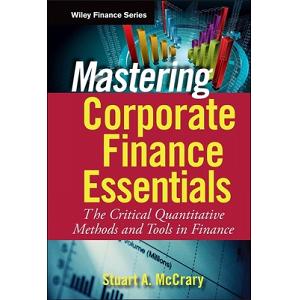20. Comparing Investment Criteria – you are a senior manager at Poeing Aircraft and have been authorized to spend up to $400,000 for projects. The three projects you are considering have the following characteristics:
Project A : Initial investment of $280,000. Cash flow of $190,000 at year 1 and $170,000 at year 2. This is a plant expansion project, where the required rate of return is 10 percent.
Project B: Initial investment of $390,000. Cash flow of $270,000 at year 1 and $240,000 at year 2. This is a new product development project, where the required rate of return is 20 percent.
Project C: Initial investment of $230,000. Cash flow of $160,000 at year 1 and $190,000 at year 2. This is a market expansion project, where the required rate of return is 15 percent.
Assume the corporate discount rate is 10 percent.
Please offer your recommendations, backed by your analysis (payback, IRR, PI, NPV):
Answer:
The payback period is the time that it takes for the cumulative undiscounted cash inflows to equal the initial investment.
Project A :
Cumulative cash flows year 1 = $190,000 =$190,000
Cumulative cash flows year2 = $190,000+$170,000 =$360,000
Payback period = 1 + ($90,000+$170,000) =1.53 years.
Project B:
Cumulative cash flows year 1 = $270,000 = $270,000
Cumulative cash flows year 2 = $270,000+$240,000 =$510,000
Payback period = 1 + ($120,000/$240,000) = 1.50 years
Project C:
Cumulative cash flows year 1 = $160,000 =$160,000
Cumulative cash flows year2 = $160,000+$190,000 =$350,000
Payback period = 1 + ($70,000/$190,000) = 1.37 years.
IRR
IRR project A:
0 = -$280,000 + $190,000/(IRR) + $170,000/(IRR)2
IRR = 18.91
IRR project B:
0 = -$390,000 + $270,000/(IRR) + $240,000/(IRR)2
IRR = 20.36
IRR project C:
0=-$230,000 +$160,000/(IRR) +$190,000/(IRR)2
IRR = 32.10
IRR criteria implies accepting project C
The profitability index is the present value of all subsequent cash flows, divided by the initial investment. We need to discount the cash flows of each project by the required return of each project. The profitability index of each project is:
PI project A = ($190,000/1.10 +$170,000/1.102)/$280,000
PI = (172,727.27+140,495.87)/280,000
PI=1.12
PI project B = ($270,000/1.20 +$240,000/1.202)/$390,000
PI =($225,000+166,666.67)/390,000
PI=1.00
PI project C = ($160,000/1.15 +$190,000/1.152)/$230,000
PI=(139,130.43+143,939.39)/230,000
PI=1.23
The PI criteria implies accepting project C
We need to discount the cash flows of each project by the required return of each project. The NPV of each project is:
NPV project A:
NPV = -$280,000 + $190,000/1.10 +$170,000/1.102
NPV = $33,223.14
NPV project B:
NPV = -$390,000 +$270,000/1.20 +$240,000/1.202
NPV = $1,666.67
NPV project C:
NPV = -$230,000 +$160,000/1.15 + $190,000/1.152
NPV = $53,069.82
Read more:
NPV & IRR calculator:
calculate using calculator at http://www.datadynamica.com/irr.asp
| Input Cash Flows: | ||||||
| Enter negative values for cash outflow (investment) and positive for cash inflow (revenue). See example on the right. | Example:Invest $100,000 in Year 1 and receive revenues $50,000, $40,000, $30,000, $20,000 from Year 2 to 5. What is the Investment Rate of Return? If the required rate of return (discount rate) is 3.125%, what is the net present value? Procedures:Enter cash flows -100000, 50000, 40000, 30000, 20000 for Year 1 to 5. Enter 3.125 to the Discount Rate box, then click 'Calculate' button. Answers: The rate of return of this investment project is 17.804%. The net worth of this project is $31,135.61. | |||||
| 1. |
| |||||
| 2. | ||||||
| 3. | ||||||
| 4. | ||||||
| 5. | ||||||
| 6. | ||||||
| 7. | ||||||
Discount Rate: % | IRR is independent of the Discount Rate. To calculate NPV, enter a discount rate which may be your cost of borrowing rate. | |||||

No comments:
Post a Comment